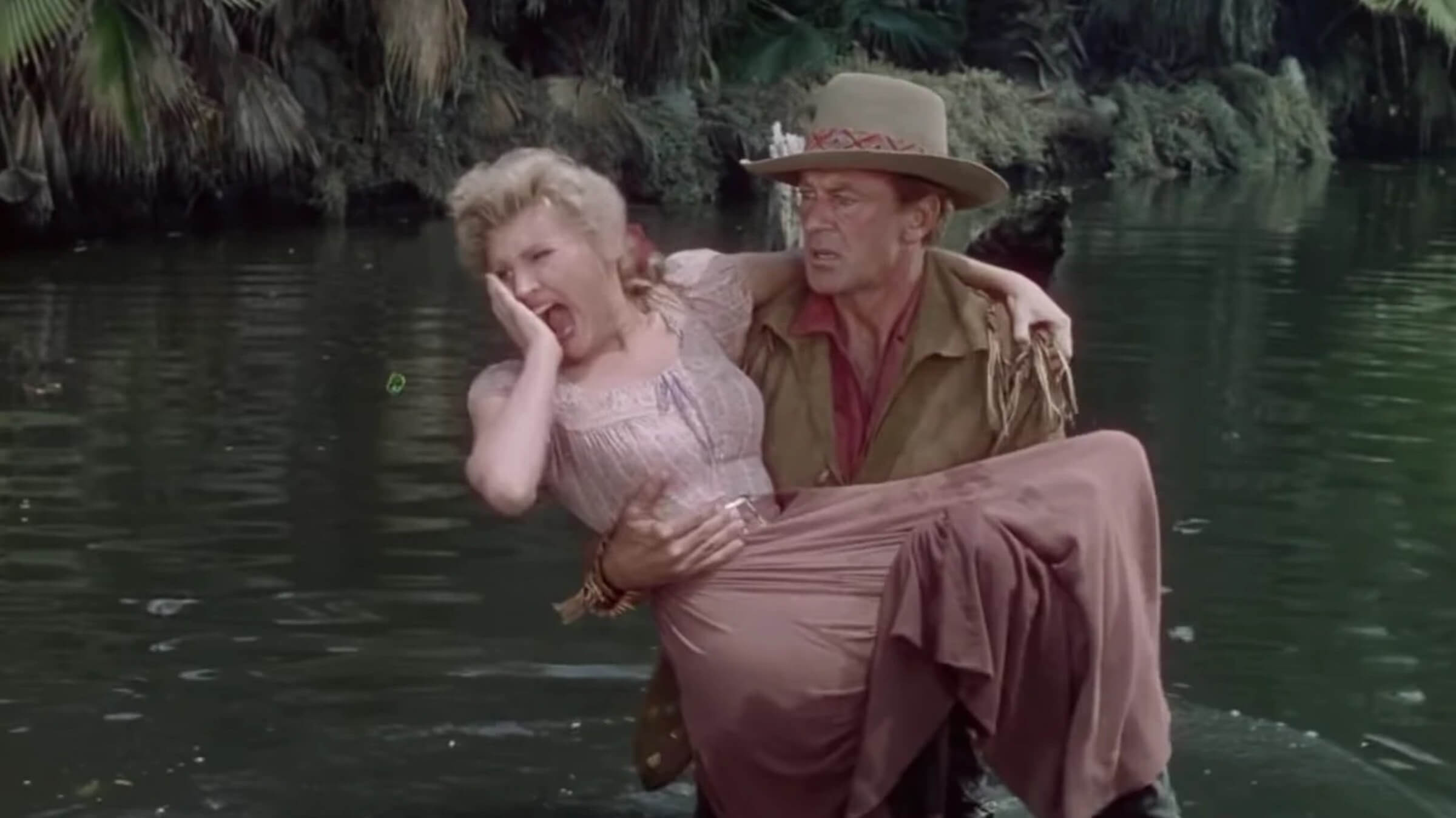By Ken Miyamoto from ScreenCraft · April 10, 2024

The Wilhelm scream is one of the best inside jokes in Hollywood, known for its distinctive, high-pitched yelp that encapsulates either surprise or anguish. The Wilhelm scream sound effect was a go-to option when a character was shot, thrown from an explosion, or forced to fall from great heights.
In the 1950s and 1960s, it started as general usage for television and film productions—and their sound designers and sound editors—no more noteworthy than any of the thousands of stock sound effects utilized in post-production.
But in the 1970s, the Wilhelm scream to the masses thanks to a box office record-breaking pop culture phenomenon, leading to a new generation of filmmakers and sound designers using it as the best Hollywood inside joke that even audiences were privy to as they sat in movie theaters listening for the ultimate Easter egg soundbite.
Read More: Screenwriting 101: When Summer Blockbusters Make You Think
The Raquel Welsh and Gary Cooper Western Distant Drums (1951) featured a scene involving a platoon of soldiers wading through swampy waters. One of them is suddenly bitten and dragged into the water by an alligator. The soldier utters a distinctive scream:
The iconic scream wasn’t captured on set. Instead, the uncredited actor playing the role, Sheb Wooley, recorded the scream in post-production.
There were six original takes of the scream recorded while receiving direction from someone (also captured on the original sound recording). The first three sound nothing like the Wilhelm scream we’ve grown to cherish. It was the fourth take where Wooley hit the right sound. Two additional variations followed, but the fourth is likely the Wilhelm scream.
Here is the original recording entitled, Man Getting Bit By an Alligator, and He Screams.
The sound effects moniker didn’t come from Sheb Wooley or the feature it debuted in. Instead, the name comes from The Charge at Feather River (1953).
It wasn’t until the post-production of George Lucas’ 1977 hit Star Wars that Oscar-winning sound designer Ben Burtt coined the term Wilhelm scream, attributing the sound bite to the Wilhelm character from The Charge of Feather River. The Wilhelm scream was the only point of reference Burtt had for the oddly titled Man Getting Bit By an Alligator, and He Screams sound effects.
Anderson was the first to use it in the 1976 film Hollywood Boulevard. Just a year later, Burtt would use it for Star Wars.
They later worked together on Steven Spielberg’s Raiders of the Lost Ark (1981), once again inserting the Wilhelm scream into an action scene.
As these two films—and their directors—became iconic cinematic legends, the use of the Wilhelm scream began to spread in bigger and bigger movies. It started as a form of camaraderie between sound designers, and later as a rite of passage for sound designers looking to find creative and fun ways to feature the sound effect.
This later shifted to directors wanting in on the action. Quentin Tarantino has used the Wilhelm scream in his movies, starting first with his debut cult hit Reservoir Dogs (1992):
He would later go on to use it in other films of his as well, including Inglourious Basterds (2009):
Even Pixar managed to grasp hold of the Wilhelm scream, dating back to its first feature release of Toy Story in 1995. The animation studio has used it in most of their films since:
Read More: CREATIVITY INC: What You Can Learn From Pixar Movies Before They Were Movies
But it was at the dawn of the internet that the masses began to become aware of the Wilhelm scream phenomenon. Once Star Wars fans began to write about it online, the scream was no longer an inside joke for sound designers and filmmakers.
Audiences learned to listen to the Wilhelm scream in movie theaters. Websites began to track the usage of the scream in all facets of media. When YouTube and other video platforms began to surface, anyone could mix their versions.
The Wilhelm scream has since become a pop culture icon, utilized in everything from movies and television shows to cartoons and video games.
It now symbolizes a playful continuity in the entertainment industry, connecting generations of filmmakers and movie lovers alike. The National Science and Media Museum reports that more than 400 films have featured the yell—and the number continues to grow.
The scream’s unique blend of history, humor, and homage ensures that it will continue to echo through cinemas for years to come, delighting those in the know and surprising those new to its yelping call.
Read More: A Brief History of Screenwriting
Ken Miyamoto has worked in the film industry for nearly two decades, most notably as a studio liaison for Sony Studios and then as a script reader and story analyst for Sony Pictures.
He has many studio meetings under his belt as a produced screenwriter, meeting with the likes of Sony, Dreamworks, Universal, Disney, Warner Brothers, as well as many production and management companies. He has had a previous development deal with Lionsgate, as well as multiple writing assignments, including the produced miniseries Blackout, starring Anne Heche, Sean Patrick Flanery, Billy Zane, James Brolin, Haylie Duff, Brian Bloom, Eric La Salle, and Bruce Boxleitner, the feature thriller Hunter’s Creed, and many Lifetime thrillers. Follow Ken on Twitter @KenMovies and Instagram @KenMovies76